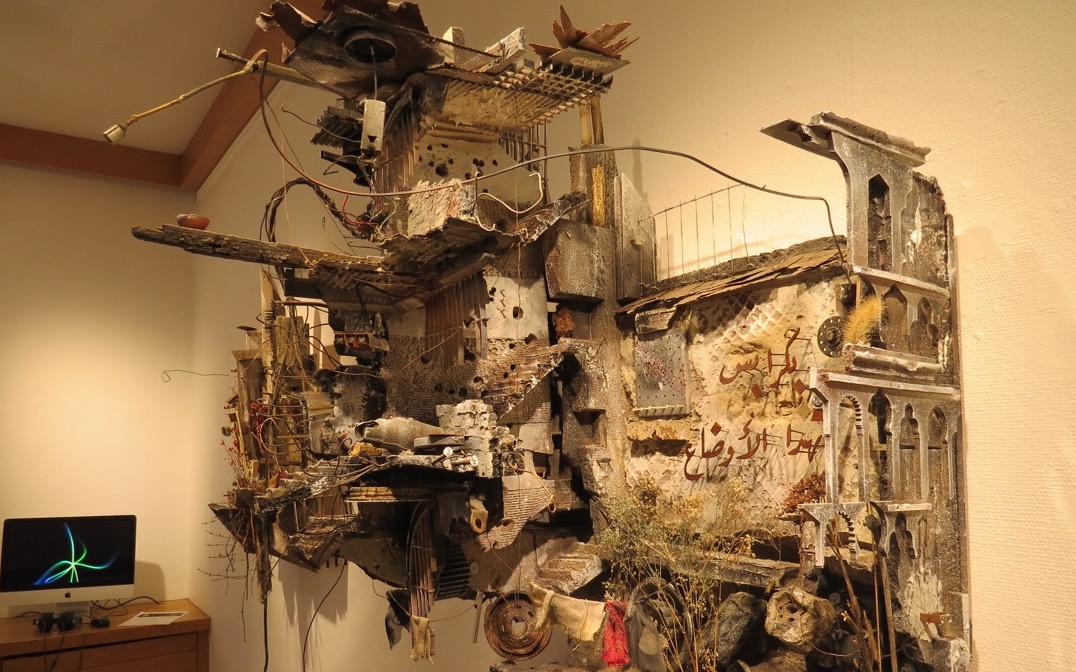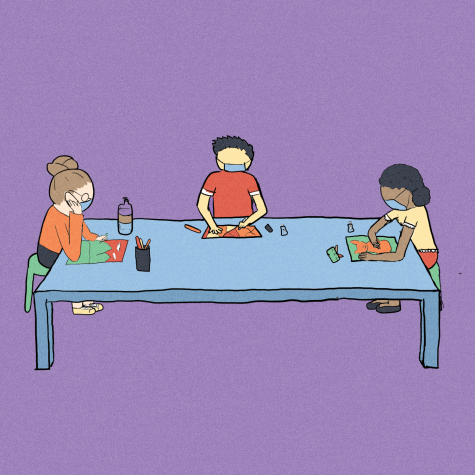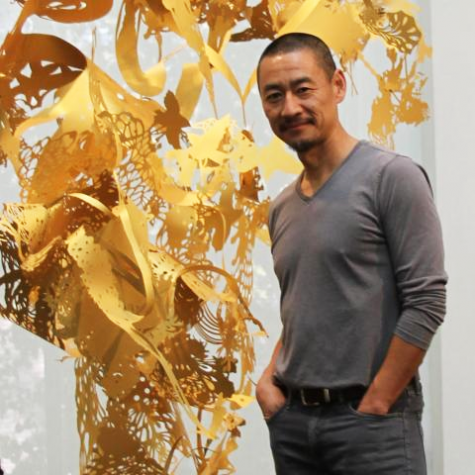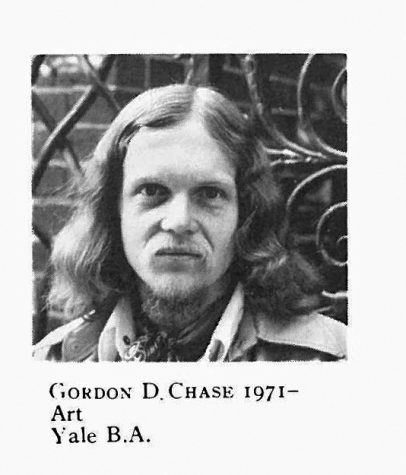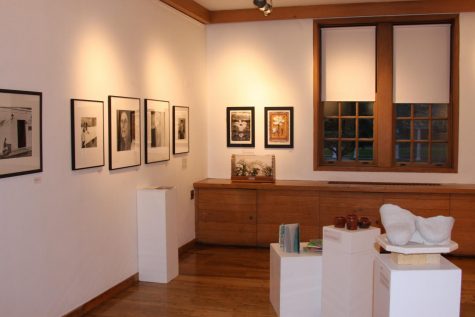Mohamad Hafez brings art to the Circle
This spring, Syrian artist Mohamad Hafez installed his powerful work around the Circle. Thanks to Beth Van Gelder, Mr. Hafez has been welcomed into our community to tell his story through his work.
Ms. Van Gelder first noticed Mohamad’s work in an ad in Artscope Magazine for an exhibit he was having in New Haven at the time. She was struck by the “image and timeliness” of his subject, and immediately called the gallery for more information. She invited Mohamad to the Circle in September to see potential spaces around campus to display his work. Mohamad was impressed with the space he saw and instantly agreed to begin installing his work in the spring.
Mohamad Hafez was born in Damascus in 1984 and moved to the kingdom of Saudi Arabia, where he was raised, at the age of one. Throughout his early life, Mohamad’s dream had always been to get a degree in architecture from an American University. After obtaining a student visa, he achieved his goal and joined the class of ‘04 Northern Illinois University in DeKalb, Illinois.
Mr. Hafez began to fixate on his artistic side more throughout college. Along with his attraction to architecture, Mohamad had also always nursed a fascination for graffiti. He was mesmerized by the fearless expression, especially when it was painted across a significant or symbolic piece of architecture. This fascination helped catalyze Mr. Hafez’s artistic experimentation. He attempted to mimic the style and the bold message that he felt the graffiti captured in his work.
However, Mr. Hafez didn’t start creating his most recent work until he was separated from his home. It wasn’t until he was well into getting his degree in architecture that he realized that the visa he had obtained was a one-way ticket. He was not allowed to leave the US for eight more years, while he was a student a Northern Illinois University and then at Iowa State University. During these years, he felt empty, significant homesickness making him long for a piece of his home in the United States. It was then that he began creating photo-realistic, three-dimensional pieces. For Mohamad, his art is incredibly personal and nostalgic. He states in his documentary, “When I left Syria, I realized how many things I am greatly attached to. The greatest of these things was the social life. And you can see that in my work.”
His work has progressed from being simply nostalgic to combining his passion for street art and activism as well as personal sentimentality. He now compiles objects he finds, paint, and scrap metal not only to tell the story of his country, but also to “architecturally represent the urban fabric of the Middle East and serve as his backdrops for political and social expression” according to a review found on his website. He states again in his documentary, “This work is done as a creative outlet for me, as a person witnessing his country ripped apart into a million pieces. I am one of these voices capturing this tragedy.” His most recent work is a direct response to the atrocities of the Syrian war. He depicts the destruction of Civil War and attempts to “capture the magnitude of the devastation and expose the fragility of human life.” Mohamad feels that the horrors of the Syrian War deserve a level of attention far above that which they are being given. He aims to spread awareness of the state of his beloved country and sympathy of those struggling to survive because of the war.
However, although Mohamad portrays a country in dismal condition, a certain hopefulness still shines through his work. There is a prominent contrast between the bleak scenes he creates and the optimistic message he presses. The optimism he imbues is subtle, but he draws it out by incorporating verses from the Quran throughout his work: “Scenes reiterate narratives from the Quran to affirm that, even during the darkest of times, patience is necessary for the blossoming of life and that, eventually, justice will prevail.” Mr. Hafez not only draws attention to the issues at hand, but also assures his audience that the war will end eventually and the country will someday settle back into a peaceful state.
Ms. Van Gelder describes the first time she saw Mohamad’s work in person, saying, “It was, for me, a transformative experience.” She found his wall sculptures riveting and was absolutely touched by the reality of the images he portrayed. She loved the way he captured the sense of shattered lives with details that reflect our common humanity. “It was exciting to find a perfect place over the Forum to display ‘Desperate Cargo.’” Many, if not all students around campus feel similarly. His work is powerful and touching, and awareness of the Syrian conflict is raised now that it is a constant in our lives, literally hovering over our heads in the Forum.
As Mr. Hafez illustrates and Ms. Van Gelder articulates, artists have a responsibility to use their art to reflect the conflicts they see around them. From these, they must find inspiration and turn it into awareness and inspiration for others, in a form of social activism. Visual images have incredible influence, and those that Mohamad offers are profound. Ms. Van Gelder agrees: “You can’t look at this art without feeling a sense of empathy mixed with a sense of gratitude for our good fortune.”


